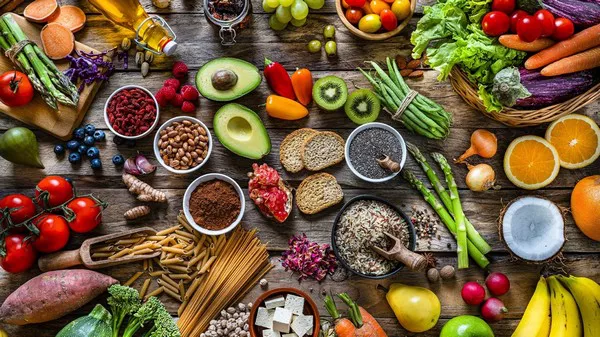Losing weight, particularly losing 20 pounds, is a common goal for many people seeking to improve their health and fitness. Cardiovascular exercise (cardio) is a key component in any weight loss regimen, as it helps burn calories and improve overall cardiovascular health. However, determining the right amount of cardio can be challenging. This article will explore how much cardio is needed to lose 20 pounds, considering various factors such as types of cardio, intensity levels, and individual differences.
Understanding Weight Loss
Calories In vs. Calories Out
Weight loss fundamentally revolves around the concept of calories in versus calories out. To lose weight, you need to create a calorie deficit, meaning you consume fewer calories than your body uses. This deficit forces your body to use stored fat for energy, leading to weight loss. One pound of fat is approximately equivalent to 3,500 calories. Therefore, to lose 20 pounds, you need to create a calorie deficit of about 70,000 calories.
Role of Cardio in Weight Loss
Cardio exercises increase your heart rate and help burn calories, making them an effective way to create a calorie deficit. Different types of cardio can burn varying amounts of calories, and factors such as your weight, intensity of the exercise, and duration will influence how many calories you burn.
Types of Cardio Exercises
Low-Intensity Steady State (LISS)
Low-Intensity Steady State cardio involves exercising at a steady, moderate pace for an extended period. Activities like walking, jogging, and cycling are common forms of LISS. This type of cardio is suitable for beginners and can be sustained for longer durations, making it easier to accumulate a significant calorie burn over time.
High-Intensity Interval Training (HIIT)
High-Intensity Interval Training involves short bursts of intense exercise followed by rest or low-intensity periods. HIIT workouts are efficient and can burn a large number of calories in a short time. They also have the added benefit of increasing your metabolic rate for hours after the workout, known as the afterburn effect or excess post-exercise oxygen consumption (EPOC).
Moderate-Intensity Cardio
Moderate-intensity cardio falls between LISS and HIIT in terms of intensity and calorie burn. Activities such as brisk walking, moderate cycling, and dancing can be considered moderate-intensity exercises. These workouts can be sustained longer than HIIT but are more intense than LISS, offering a balanced approach to calorie burning.
Factors Influencing Cardio Needs
Current Fitness Level
Your current fitness level plays a significant role in determining how much cardio you need. Beginners might start with shorter, less intense sessions and gradually increase duration and intensity as their fitness improves. More experienced individuals can handle longer and more intense workouts from the start.
Weight and Body Composition
Heavier individuals burn more calories during cardio due to the increased effort required to move their bodies. Additionally, muscle mass can influence calorie burn, as muscle tissue is metabolically active and burns more calories at rest compared to fat tissue.
Diet and Nutrition
Your diet significantly impacts your weight loss journey. While cardio can help create a calorie deficit, consuming a balanced, nutrient-rich diet ensures you lose fat rather than muscle and maintain energy levels for your workouts. Combining cardio with a healthy diet enhances weight loss results.
Lifestyle and Daily Activity Level
Your overall daily activity level affects how much cardio you might need. Someone with a sedentary lifestyle will need more dedicated cardio sessions compared to someone who is already active throughout the day. Incorporating more movement into your daily routine can complement your cardio efforts.
Designing a Cardio Plan to Lose 20 Pounds
Setting Realistic Goals
Losing 20 pounds is a significant goal and should be approached with realistic expectations. Aim to lose 1-2 pounds per week, which is a safe and sustainable rate. This means it could take 10-20 weeks to reach your goal, depending on your starting point and consistency.
Frequency and Duration
For beginners, starting with 3-4 cardio sessions per week, each lasting 30-45 minutes, is a good starting point. As your fitness improves, you can increase the frequency to 5-6 times per week and the duration to 45-60 minutes per session. Combining different types of cardio (LISS, HIIT, moderate-intensity) can prevent boredom and keep your workouts effective.
Intensity Levels
Varying the intensity of your workouts can maximize calorie burn and keep your body challenged. Incorporating HIIT workouts 1-2 times per week can significantly boost your metabolism, while LISS and moderate-intensity sessions can help maintain endurance and promote recovery.
Progressive Overload
Progressive overload involves gradually increasing the intensity, duration, or frequency of your workouts to continue challenging your body. This principle is crucial for avoiding plateaus and ensuring continuous progress. Track your workouts and make adjustments as needed to keep moving towards your goal.
Sample Cardio Plan
Week 1-4: Building the Foundation
Monday: 30 minutes brisk walking (LISS)
Wednesday: 20 minutes HIIT (e.g., 30 seconds sprint, 1 minute walk)
Friday: 30 minutes cycling (moderate intensity)
Saturday: 40 minutes jogging (LISS)
Week 5-8: Increasing Intensity
Monday: 40 minutes brisk walking (LISS)
Tuesday: 20 minutes HIIT
Thursday: 45 minutes cycling (moderate intensity)
Saturday: 45 minutes jogging (LISS)
Sunday: 30 minutes dancing (moderate intensity)
Week 9-12: Advanced Training
Monday: 45 minutes brisk walking (LISS)
Tuesday: 25 minutes HIIT
Thursday: 50 minutes cycling (moderate intensity)
Saturday: 50 minutes jogging (LISS)
Sunday: 35 minutes dancing (moderate intensity)
Week 13-16: Final Push
Monday: 50 minutes brisk walking (LISS)
Tuesday: 30 minutes HIIT
Thursday: 55 minutes cycling (moderate intensity)
Saturday: 55 minutes jogging (LISS)
Sunday: 40 minutes dancing (moderate intensity)
Incorporating Strength Training
Benefits of Strength Training
While cardio is crucial for creating a calorie deficit, strength training helps preserve muscle mass during weight loss. It also boosts your metabolism, as muscle tissue burns more calories than fat tissue even at rest. Incorporating strength training 2-3 times per week can enhance your overall weight loss results.
Combining Cardio and Strength Training
A balanced workout routine includes both cardio and strength training. You can alternate days of cardio and strength training or combine both in a single session. For example, you might do a HIIT workout followed by a strength training session targeting different muscle groups.
Monitoring Progress
Tracking Workouts and Nutrition
Keeping a journal or using a fitness app to track your workouts and nutrition can help you stay accountable and make necessary adjustments. Record details such as exercise type, duration, intensity, and meals consumed. Monitoring your progress helps you identify patterns and make data-driven decisions.
Regular Assessments
Regularly assess your progress by weighing yourself weekly and taking body measurements monthly. Keep in mind that weight loss can fluctuate due to factors like water retention and muscle gain. Focusing on overall trends rather than daily changes provides a more accurate picture of your progress.
Overcoming Plateaus
Adjusting Your Routine
Weight loss plateaus are common and occur when your body adapts to your current routine. To overcome plateaus, consider adjusting your workout intensity, trying new cardio exercises, or altering your diet. Implementing progressive overload and varying your workouts can help break through these plateaus.
Staying Motivated
Maintaining motivation throughout your weight loss journey is essential. Set smaller, achievable goals along the way and celebrate your progress. Joining a fitness community, finding a workout buddy, or hiring a personal trainer can provide additional support and encouragement.
Conclusion
Losing 20 pounds is an achievable goal with the right combination of cardio exercise, strength training, and a balanced diet. The amount of cardio needed will vary based on individual factors such as fitness level, weight, and lifestyle. By setting realistic goals, progressively challenging your body, and monitoring your progress, you can successfully reach your weight loss target. Remember, consistency and patience are key to sustainable weight loss and overall health improvement.
[inline_related_posts title=”You Might Be Interested In” title_align=”left” style=”list” number=”6″ align=”none” ids=”9111,9108,9018″ by=”categories” orderby=”rand” order=”DESC” hide_thumb=”no” thumb_right=”no” views=”no” date=”yes” grid_columns=”2″ post_type=”” tax=””]


































